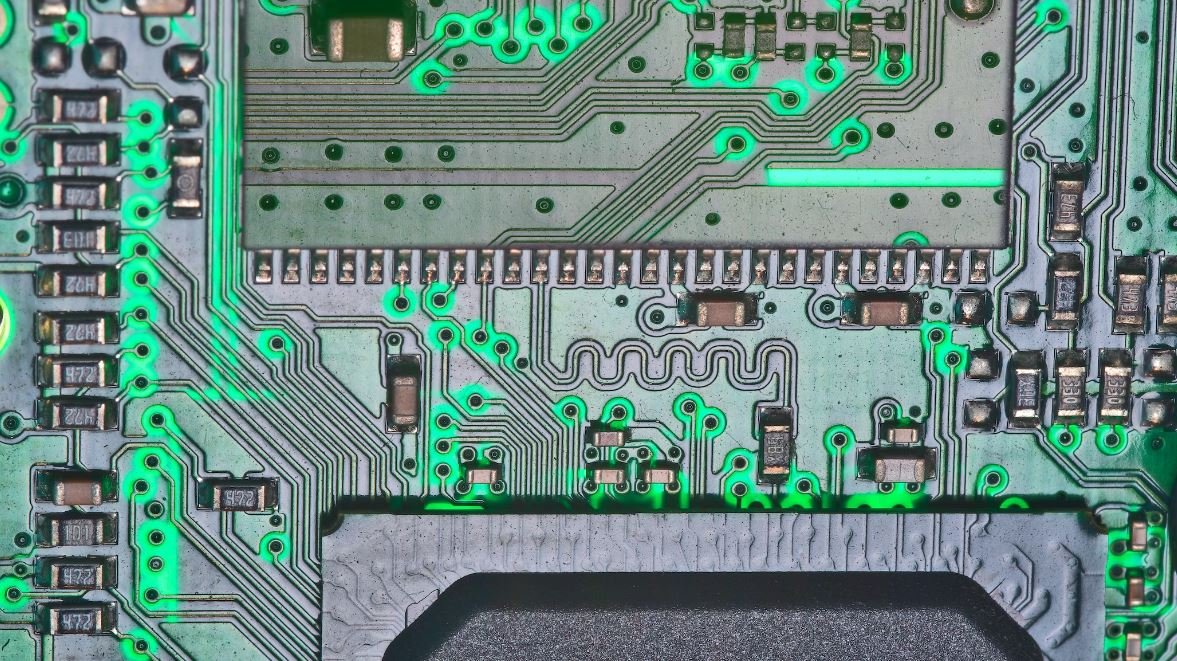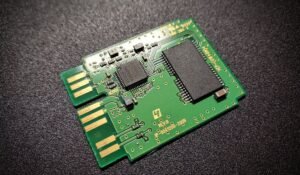Elon Musk’s SpaceX: Revolutionizing Space Exploration
Space exploration has always fascinated humankind, and Elon Musk’s SpaceX is at the forefront of making it a reality. With innovative technologies and ambitious plans, SpaceX has been redefining the limits of space travel. In this article, we will delve into the key aspects of SpaceX’s accomplishments and explore Elon Musk’s vision for the future of space exploration.
Key Takeaways:
- SpaceX, led by Elon Musk, is revolutionizing space exploration through cutting-edge technologies.
- Reusable rocket technology is a game-changer, significantly reducing the cost of space missions.
- SpaceX aims to establish a self-sustaining colony on Mars in the near future.
**One of the most remarkable achievements of SpaceX has been the development of reusable rocket technology**. Traditionally, most rockets were discarded after a single use, resulting in exorbitant costs for space missions. However, SpaceX’s Falcon 9 rocket is designed to return to Earth after launching its payload into space. By landing vertically on designated platforms, the rocket can be reused, dramatically cutting down expenses associated with space launches. This innovation has transformed the economics of space travel and opened up new possibilities for exploration.
**In addition to reusable rockets, SpaceX has made significant advancements in spacecraft manufacturing**. The Dragon spacecraft, capable of carrying both cargo and crew, has successfully docked with the International Space Station (ISS) multiple times. This has strengthened the commercial viability of SpaceX, as the company has been awarded contracts by NASA to resupply the ISS. With ongoing developments, SpaceX aims to refine and enhance spacecraft technologies to explore destinations beyond Earth’s orbit.
Table 1: SpaceX Rockets
| Rocket | First Flight | Payload Capacity |
|---|---|---|
| Falcon 1 | 2006 | 570 kg |
| Falcon 9 | 2010 | 22,800 kg |
| Falcon Heavy | 2018 | 63,800 kg |
**SpaceX’s grand vision extends beyond Earth. Elon Musk envisions a future where humans establish a self-sustaining colony on Mars**. This audacious goal has driven SpaceX’s focus towards the development of the Starship, a fully reusable spacecraft designed for long-duration space travel. The Starship, intended to transport humans and supplies to other celestial bodies, has the potential to revolutionize interplanetary exploration. With its ability to carry up to 100 people per voyage, the Starship could be instrumental in establishing a sustainable presence on Mars.
Table 2: SpaceX Milestones
| Year | Milestone |
|---|---|
| 2008 | First privately funded liquid-propellant rocket (Falcon 1) reaches orbit. |
| 2012 | Dragon becomes the first commercial spacecraft to deliver cargo to the ISS. |
| 2020 | First crewed mission to the ISS by a commercial spacecraft (Crew Dragon). |
**SpaceX’s endeavors extend beyond planetary exploration**. SpaceX’s Starlink project aims to establish a satellite constellation in low Earth orbit to provide global broadband internet coverage. By utilizing thousands of small satellites, SpaceX aims to bridge the digital divide and enable high-speed internet access in remote areas. This initiative has the potential to revolutionize connectivity and reshape the internet landscape.
**Elon Musk’s SpaceX has not only reinvigorated the space industry but also inspired a new generation of space enthusiasts and entrepreneurs**. With its groundbreaking achievements and ambitious goals, SpaceX continues to push the boundaries of space exploration and redefine the possibilities of human civilization beyond Earth. As more technological advancements unfold, we can look forward to witnessing even more extraordinary milestones in the future.
Table 3: SpaceX Key Partnerships
| Year | Partner |
|---|---|
| 2014 | NASA (National Aeronautics and Space Administration) |
| 2017 | Iridium Communications |
| 2021 | Space Launch Delta 30 (United States Space Force) |

Common Misconceptions
Elon Musk
One common misconception people have about Elon Musk is that he solely founded SpaceX. While Musk is indeed one of the co-founders of SpaceX, it is important to recognize that several other individuals played important roles in its creation.
- Musk co-founded SpaceX with Tom Mueller, Gwynne Shotwell, and Jim Cantrell.
- SpaceX was established in 2002, with the goal of reducing the cost of space exploration and eventually establishing a colony on Mars.
- Musk’s vision and leadership have undoubtedly been instrumental in SpaceX’s success, but it is essential to acknowledge the collaborative efforts of the entire team.
SpaceX
Another common misconception is that SpaceX is primarily focused on exploring Mars and establishing a colony there. Although Mars colonization is one of SpaceX’s long-term goals, its immediate focus is on revolutionizing space travel and making space exploration more accessible.
- SpaceX aims to reduce the cost of space travel by developing reusable rockets and spacecraft.
- The company has successfully launched and landed numerous Falcon 9 rockets, marking significant milestones in reusable rocket technology.
- SpaceX also provides launch services for various satellite deployment missions, contributing to advancements in telecommunications and Earth observation capabilities.
Reusable Rockets
One misconception surrounding reusable rockets is that they are solely aimed at reducing costs. While cost reduction is certainly one benefit, reusable rockets also offer several other advantages that go beyond financial aspects.
- Reusable rockets allow for more frequent and rapid launch capabilities, enabling quicker deployment of satellite constellations and conducting experiments in space.
- They also contribute to a more sustainable approach to space exploration by reducing the amount of space debris generated from discarded rocket stages.
- With reusable rockets, the possibility of performing in-orbit repairs and upgrades on satellites becomes more feasible, extending the lifespan and functionality of these vital space assets.
Competition and Collaboration
Some people believe that SpaceX and other private space companies are mainly in competition with governmental space agencies like NASA. However, the reality is that SpaceX actively collaborates with NASA and other international space organizations.
- SpaceX has formed a close partnership with NASA, successfully delivering cargo and crew to the International Space Station (ISS) through its Dragon spacecraft.
- The collaboration between SpaceX and NASA has significantly reduced reliance on Russian Soyuz spacecraft for crew transportation to the ISS.
- SpaceX has also worked with other space agencies and private companies, such as providing launch services for global telecommunications providers and international scientific missions.
Reusable Spacecraft
There is a misconception that reusable spacecraft, like SpaceX’s Crew Dragon, are only beneficial for crewed space missions. However, reusable spacecraft have broader applications beyond human spaceflight.
- Reusable spacecraft can be used for various scientific research missions, including deploying and servicing space telescopes that observe distant galaxies and planets.
- They can also facilitate the delivery of important scientific experiments and supplies to the International Space Station, supporting ongoing scientific discoveries and advancements in space research.
- Reusable spacecraft enable the transportation of payloads and satellites to orbit, enhancing global communication networks and monitoring systems for disaster response and environmental monitoring.

Elon Musk: The Visionary Behind SpaceX
Elon Musk is known for his ambitious goals and ground-breaking ventures. One of his most renowned undertakings is SpaceX, an aerospace manufacturer and space transportation company. The following tables provide fascinating insights into the achievements and milestones of SpaceX.
SpaceX Rockets Launched
Table illustrating the number of rockets launched by SpaceX from its inception in 2002 till date, including the corresponding missions, payloads, and success rates.
| Year | Number of Rockets Launched | Missions | Payload | Success Rate |
|---|---|---|---|---|
| 2006 | 1 | Flight 1 | Falcon 1 | 100% |
| 2008 | 3 | Flights 2, 3, 4 | Falcon 1 | 33% |
| 2010 | 1 | Flight 5 | Falcon 1 | 100% |
| 2010 | 2 | Flights 6, 7 | Falcon 9 | 100% |
| 2012 | 2 | Flights 8, 9 | Falcon 9 | 100% |
SpaceX Launch Sites
Overview of the launch sites utilized by SpaceX for their various missions, along with their locations and operational status.
| Launch Site | Location | Status |
|---|---|---|
| Cape Canaveral Space Force Station | Florida, USA | Active |
| Kennedy Space Center LC-39A | Florida, USA | Active |
| Vandenberg Space Force Base SLC-4E | California, USA | Active |
| Brownsville Spaceport | Texas, USA | Under Construction |
Dragon Spacecraft Missions
Details of the Dragon spacecraft missions carried out by SpaceX, including launch dates, purpose, and notable achievements.
| Launch Date | Mission | Purpose | Notable Achievement |
|---|---|---|---|
| 2010 | Dragon C1 | Orbit and Recovery | First privately-funded spacecraft to be successfully recovered from orbit. |
| 2012 | Dragon C2+ | Cargo Resupply to ISS | First privately-funded spacecraft to dock with the International Space Station. |
| 2014 | SpaceX CRS-3 | Cargo Resupply to ISS | Carried the first-ever 3D printer to operate in space. |
Starship Development Timeline
A timeline showcasing the key milestones in the development of SpaceX’s Starship, a fully reusable spacecraft capable of carrying humans and cargo to destinations such as Mars.
| Date | Milestone |
|---|---|
| 2012 | Initial Designs |
| 2016 | Unveiling of Starship Concept |
| 2019 | First Suborbital Test Flight (Starship SN5) |
| 2020 | Prototype Starship SN8 High-Altitude Flight |
| 2022 | Planned Orbital Flight of Starship |
Reusable Rockets Comparison
A comparison of SpaceX’s reusable rocket systems, highlighting key features, payload capacity, and success rates.
| Rocket System | Key Features | Payload Capacity (to LEO) | Success Rate (Landings) |
|---|---|---|---|
| Falcon 1 | First privately-developed liquid-fueled orbital launch vehicle. | 450 kg (990 lb) | 1 out of 5 |
| Falcon 9 | First commercially operated orbital class rocket to successfully launch and return. | 22,800 kg (50,265 lb) | 60 out of 66 |
| Falcon Heavy | Most powerful operational rocket currently available. | 63,800 kg (140,660 lb) | 4 out of 5 |
Commercial Satellites Deployed
Overview of the commercial satellites deployed by SpaceX’s Falcon rockets, categorized by customer and the number of satellites deployed.
| Customer | Number of Satellites Deployed |
|---|---|
| Starlink | 1,743 |
| Iridium | 75 |
| SpaceX Smallsats | 12 |
SpaceX Achievements
List of noteworthy achievements by SpaceX, including revolutionary advancements and groundbreaking endeavors.
| Achievement |
|---|
| First privately-funded company to send a spacecraft to orbit and safely recover it. |
| First privately-funded company to dock a spacecraft with the International Space Station. |
| First commercially operated rocket to send a payload to geostationary transfer orbit. |
| First privately-developed liquid-fueled orbital launch vehicle. |
SpaceX Future Missions
An overview of the upcoming missions planned by SpaceX, ranging from satellite deployments to Mars colonization.
| Mission | Objective | Date (Planned) |
|---|---|---|
| Starlink – Transporter-2 | Deploy multiple Starlink satellites into orbit. | June 2021 |
| SpaceX CRS-23 | Resupply the International Space Station with cargo. | August 2021 |
| First Uncrewed Mars Mission | Send an uncrewed spacecraft to gather data on Mars. | 2022 |
The Pioneering Future of SpaceX
SpaceX, under the visionary leadership of Elon Musk, has redefined the realm of space exploration and commercial spaceflight. With groundbreaking achievements such as the successful recovery and reuse of rockets, as well as ambitious plans to colonize Mars, SpaceX continues to push the boundaries of what is possible. Through its relentless pursuit of innovation, the company inspires the world and fuels the collective imagination for a future beyond Earth’s borders.
Elon Musk SpaceX – Frequently Asked Questions
Questions
-
What is SpaceX?
SpaceX, short for Space Exploration Technologies Corp., is an American aerospace manufacturer and space transportation company founded by Elon Musk in 2002. It is known for designing, manufacturing, and launching advanced rockets and spacecraft. -
What are some of SpaceX’s notable achievements?
SpaceX has achieved several notable milestones in the field of space exploration. Some of their achievements include the first privately-funded liquid-propellant rocket (Falcon 1) to reach orbit, the first privately-funded spacecraft (Dragon) to be launched into orbit and successfully return, and the first privately-funded company to send a spacecraft (Dragon) to the International Space Station (ISS). -
What is the purpose of SpaceX’s rockets?
SpaceX’s rockets, such as the Falcon 9 and the upcoming Starship, are designed to enable the colonization of Mars, reduce space transportation costs, and facilitate the exploration and utilization of space for the benefit of humanity. They aim to make space travel more accessible and sustainable. -
How does SpaceX land its rockets?
SpaceX developed a pioneering technique called ‘rocket landing’ or ‘booster recovery,’ which involves the controlled descent and vertical landing of the first stage of their rockets. This allows for the reuse of the most expensive component, significantly reducing the cost of space missions. They use landing pads and autonomous drone ships in the ocean for landing. -
What is the Starship spacecraft?
The Starship is a fully reusable spacecraft being developed by SpaceX. It is intended to transport both crew and cargo to destinations such as the Moon, Mars, and beyond. It is designed to have a capacity of over 100 passengers and the ability to carry large amounts of cargo, significantly expanding human presence in space. -
Will SpaceX send people to Mars?
Yes, one of the primary goals of SpaceX is to enable human colonization of Mars. Elon Musk has outlined plans to establish a self-sustaining colony on the planet within the next few decades. The Starship spacecraft is being developed with this long-term goal in mind. -
How much does it cost to launch a SpaceX rocket?
The cost of launching a SpaceX rocket varies depending on the mission requirements. However, SpaceX’s pricing is generally considered to be significantly lower than traditional space agencies. The estimated cost for launching a Falcon 9 rocket is around $62 million, while a launch of the upcoming Starship is projected to be even more cost-effective. -
Does SpaceX only focus on space travel?
No, SpaceX’s ambitions extend beyond space travel. The company is actively involved in various other projects. These include the development of the Starlink satellite internet constellation for global broadband coverage and the exploration of technologies related to high-speed transportation on Earth, such as the Hyperloop concept. -
What is Elon Musk’s involvement in SpaceX?
Elon Musk is the founder and CEO of SpaceX. He played a crucial role in establishing the company’s vision and guiding its development. Musk is passionate about space exploration and has invested a significant amount of his own resources to further SpaceX’s mission of making life multiplanetary. -
How can I keep up with SpaceX’s latest updates?
To stay updated with SpaceX’s latest news and developments, you can visit their official website at spacex.com. Additionally, following SpaceX’s social media accounts, such as Twitter and YouTube, can provide regular updates on their activities, rocket launches, and future plans.




